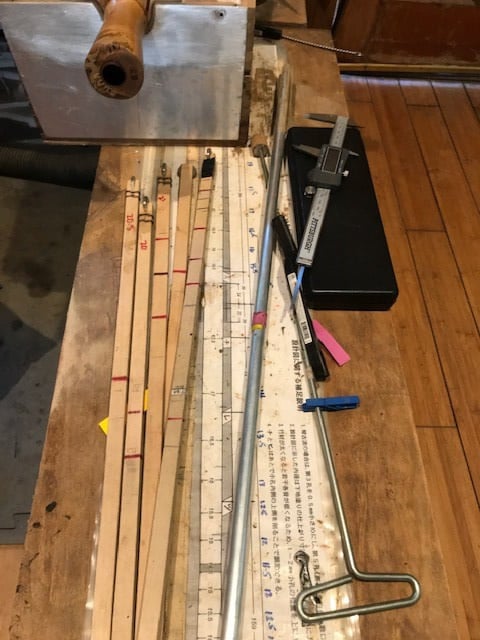Shakuhachi Bore Tuning
The Art of Shakuhachi Bore Tuning
 Five important points when tuning a jiari shakuhachi
Five important points when tuning a jiari shakuhachi
- Tone color
- Power
- responsiveness
- Pitch
- Balance through Notes and octaves
These are the five fundamental areas to tune in a bore of a shakuhachi. When beginning my journey of shakuhachi making, I focused primarily on the measurements using gauges, from standard or average bore diameter. Of course just following a schematic and measuring by gauges you cannot get a good balanced and responsive shakuhachi. With help of people such as Shingo Kimura and other makers Such as Takahshi Toyomi, and John Kaizan Neptune. They were all similar and also different in direction of point tuning. Generally my direction after making a lot of shakuhachi’s, is that I use gauges and standard bore dimensions, mainly as a guide to point me in the right direction. For example, if I’m having trouble with my ( Otsu no RO ) maybe the sound is weak or stutters, by using gauges checking the RO Point. If I was to find that the area is too narrow, I would sand in that area and not necessarily get it to exact measurements, from a diagram. Instead, sand and check by blowing Ro until I am satisfied with the results. The same would apply to the rest of the notes. There is different points throughout the shakuhachi for upper octaves lower octave’s and all the notes. The more I make shakuhachi, the more I gather a sense or feeling of where I should work by enlarging or narrowing that area. And less use of gauges, more of a feel and experience way or approach of tuning shakuhachi. And because of my lineage of Yokohama katsuya, My shakuhachi sensei is Kakizakai. He has a very powerful sound so when he comes to try my shakuhachi I have to live up to his standards, which can be very challenging but pushes me to be a better shakuhachi maker overall.


